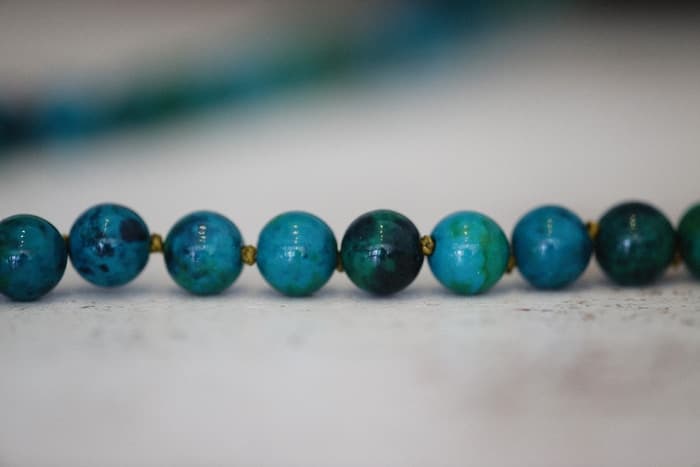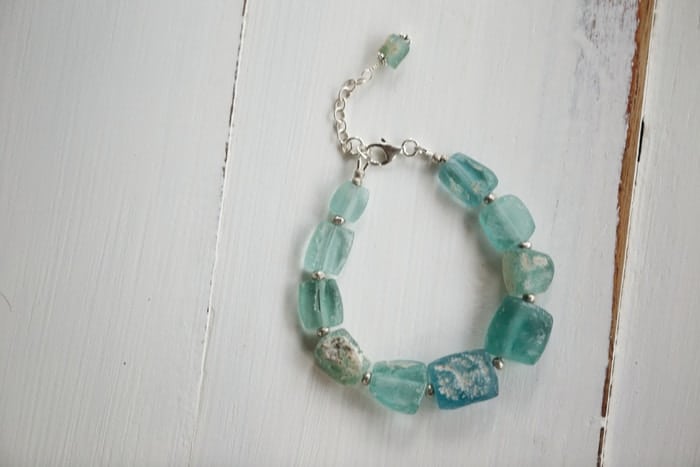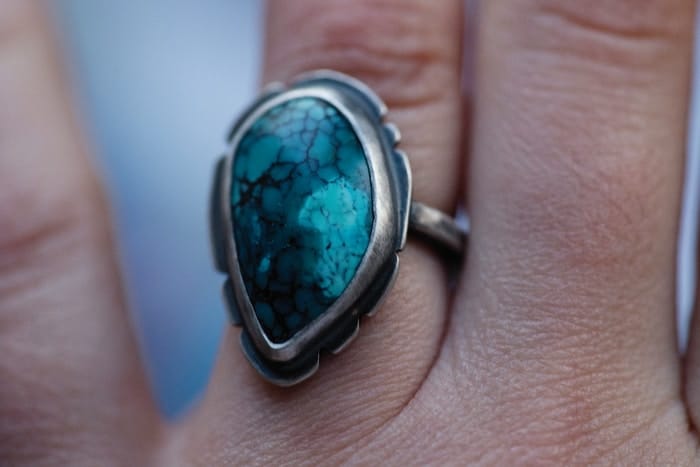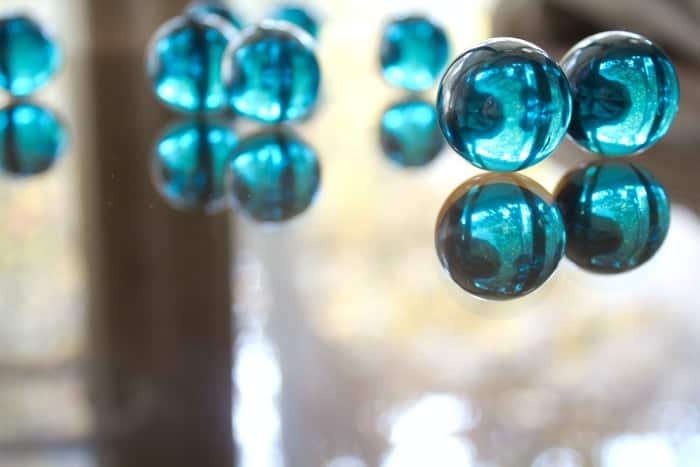While most turquoise is authentic, there are some stones that are not. It is important to be able to identify fake turquoise so that you don’t end up paying for a stone that is not worth anything.

Here are a few tips on how to spot a fake turquoise stone:
Checking for A Seam
One way to check for a seam is to hold the gemstone up to the light and look for a line where the two colors meet. If it is a fake, you will be able to see a clear line where the colors meet.
Testing the Hardness
When testing the hardness of turquoise, use a Mohs hardness scale. The scale rates minerals on a scale of 1 to 10, with 10 being the hardest. Turquoise typically rates around 6 on the scale, making it a fairly hard stone.
However, there are many different types of turquoise and some may rate as low as 3 or 4 on the hardness scale. So if you’re not sure whether or not the turquoise you’re looking at is real, test its hardness.
Compare Texture
The first way to tell if a piece of turquoise is fake is to compare its texture to that of genuine turquoise. Fake turquoise is often much smoother than the real thing. Genuine turquoise has a rough, pitted texture, while fake turquoise is often very smooth.
Check for Inclusions
The first thing to look for is inclusions. Real turquoise will have inclusions, or small pieces of other materials that are embedded in the stone. If the stone is clear with no inclusions, it is likely not real turquoise.
Observe the Color
Genuine turquoise will have a bright blue or green color, while imitation stones will often be a darker blue or green.
Evaluate the Shape and Size
Real turquoise is typically not very uniform in shape, and it is rarely a perfect square or circle. The size of the stone may also vary, with larger stones being more rare.
What Is Turquoise?
Turquoise is a blue-green mineral that is found in copper deposits. It is a popular gemstone and has been used for jewelry and other decorative items for centuries. Turquoise is also used in carvings and other objects. The color of turquoise can vary from light to dark green, blue, or gray, depending on the amount of copper present.
What Is Fake Turquoise?
Turquoise is a popular gemstone that is often used in jewelry. However, there are some sellers who sell fake turquoise. So, what is fake turquoise? Fake turquoise is typically made of glass, plastic, or other materials that are not turquoise. It is important to be able to spot fake turquoise because you may end up paying more for something that is not real.
Common Types Of Fake Turquoise
Turquoise is a beautiful and unique stone that has been used in jewelry for centuries. Unfortunately, there are many imitation stones on the market that are passed off as turquoise. Here is a list of the most common types of fake turquoise:

Turqurenite
Turqurenite is a mineral compound that is made up of copper, aluminum, and oxygen. It has a blue-green color and is often confused with turquoise. Turqurenite is found in a few locations around the world, including the United States and Turkey. The mineral is not commonly used, but it has been known to be used in jewelry and other decorative items.
Simulated Turquoise
Simulated turquoise is an affordable and popular alternative to natural turquoise. It is made by combining resin and colorants to create a stone-like appearance. Simulated turquoise is available in a variety of colors and is often used in jewelry and other decorative items. While it is not as durable as natural turquoise, it is a cost-effective option for those who want the look of turquoise without the high price tag.
Reconstituted Turquoise
Reconstituted turquoise is made by combining turquoise with other materials to create a new material that has the same appearance as natural turquoise.
Is Stabilized Turquoise Real?
Many people believe that stabilized turquoise is not real turquoise, but this is not true. Stabilized turquoise is real turquoise that has been treated with a stabilizing agent to make it more durable.
Stabilized turquoise is treated with a resin or wax to help protect it from scratches and fading. Natural turquoise is not treated and will therefore be more prone to scratches and fading.
How to Identify Fake Turquoise
How Much Does Real Turquoise Cost?
Turquoise is a beautiful blue-green gemstone that has been prized by humans for centuries. Though the cost of turquoise can vary greatly depending on the quality and size of the stone, it is generally more expensive than other gemstones.
One reason for the high price of turquoise is that it is a rare stone. The best quality turquoise comes from mines in Iran and Afghanistan, which are no longer in operation. Turquoise can also be found in the United States, but most of this material is of lower quality.
The cost of turquoise can also be influenced by its color. Darker stones are typically more expensive than lighter ones. In addition, stones with interesting patterns or inclusions (particles within the stone) can be more expensive than those that are plain.
Is Turquoise Worth More than Gold?
Turquoise is a popular gemstone that is often compared to gold. Both are considered valuable, but is turquoise worth more? The answer to this question depends on the specific stone. Some turquoises are worth more than gold, while others are not.

The value of a particular piece of turquoise jewelry depends on a number of factors, including the color, size, and quality of the stone. Pure gold is always worth more than pure turquoise, but there are many different grades of each metal. Turquoise that is highly polished and free of flaws can be worth more than gold of the same weight.
In some cases, turquoise may be more valuable because it is rarer than gold.
What Is the Rarest Turquoise?
The rarest of all turquoise is the Lander Blue Spiderweb Turquoise. This variety of turquoise is found only in a small area near Lander, Wyoming and it is estimated that only 5-10 pounds of this stone exist in the world. The spiderweb pattern in the stone is caused by the presence of copper minerals and it is highly prized by collectors.
What Is the True Color of Turquoise?
Turquoise is a light to medium blue or greenish blue stone that has been used for jewelry and other decorative items for centuries. The color of turquoise can vary depending on the type of light it is exposed to and the mineral composition of the stone.
In some cases, turquoise can be almost green in color, while in others it can be a pale blue. Some people believe that the true color of turquoise is a deep blue, but this may be because they are only seeing it in artificial light.
The true color of turquoise may never be known for sure, but it is generally accepted to be a light to medium blue or greenish blue color.




